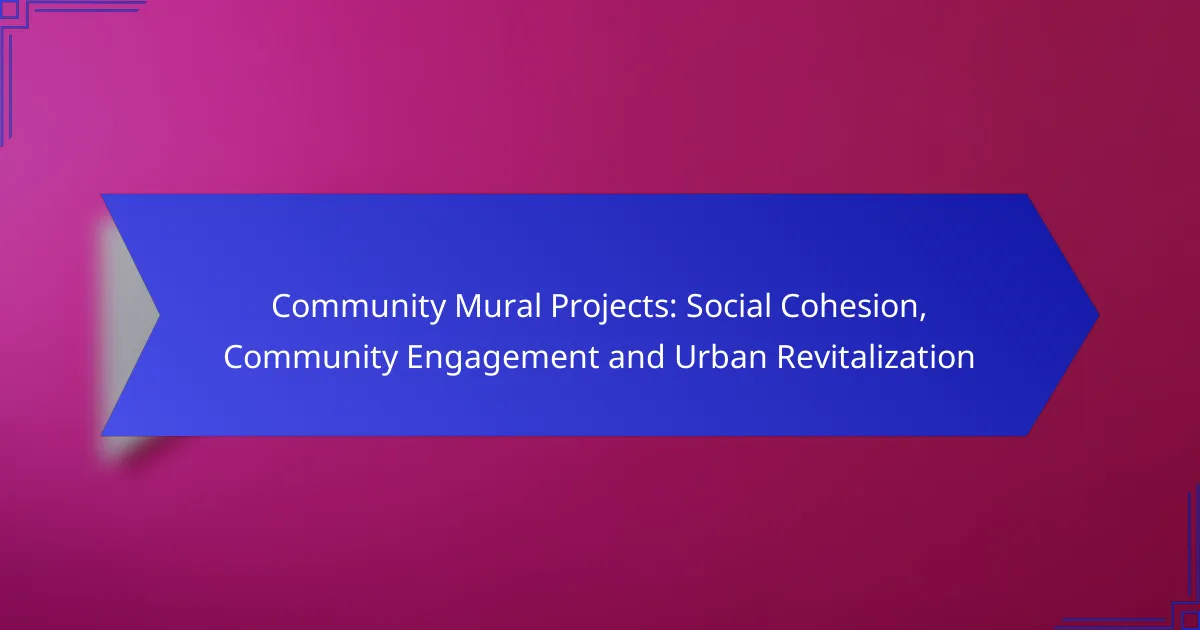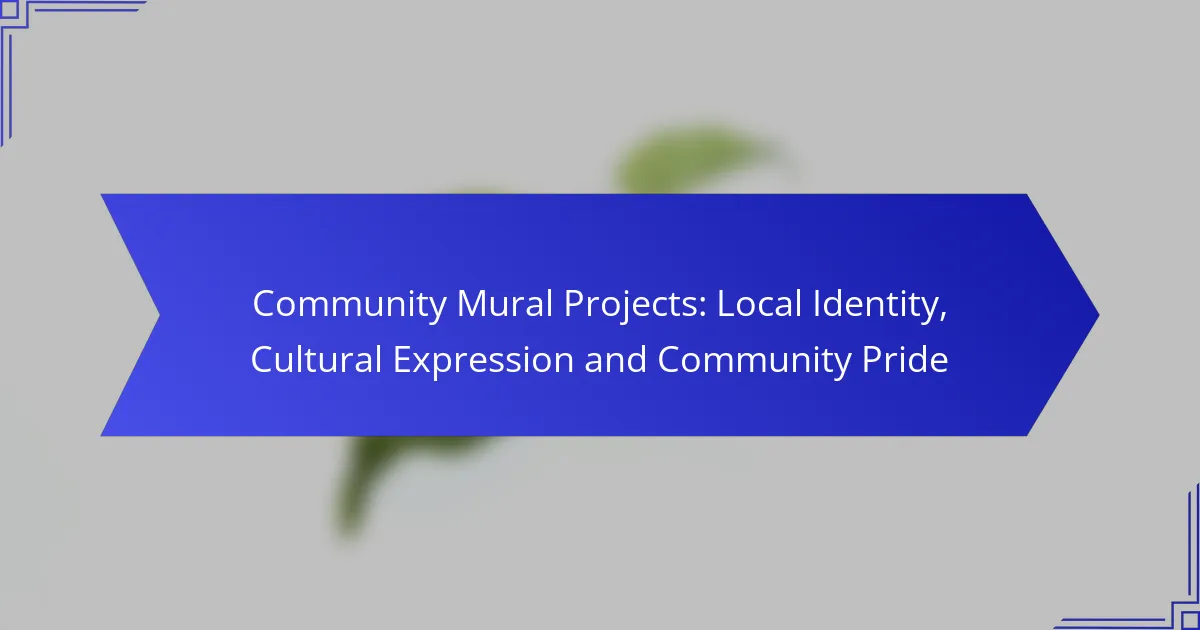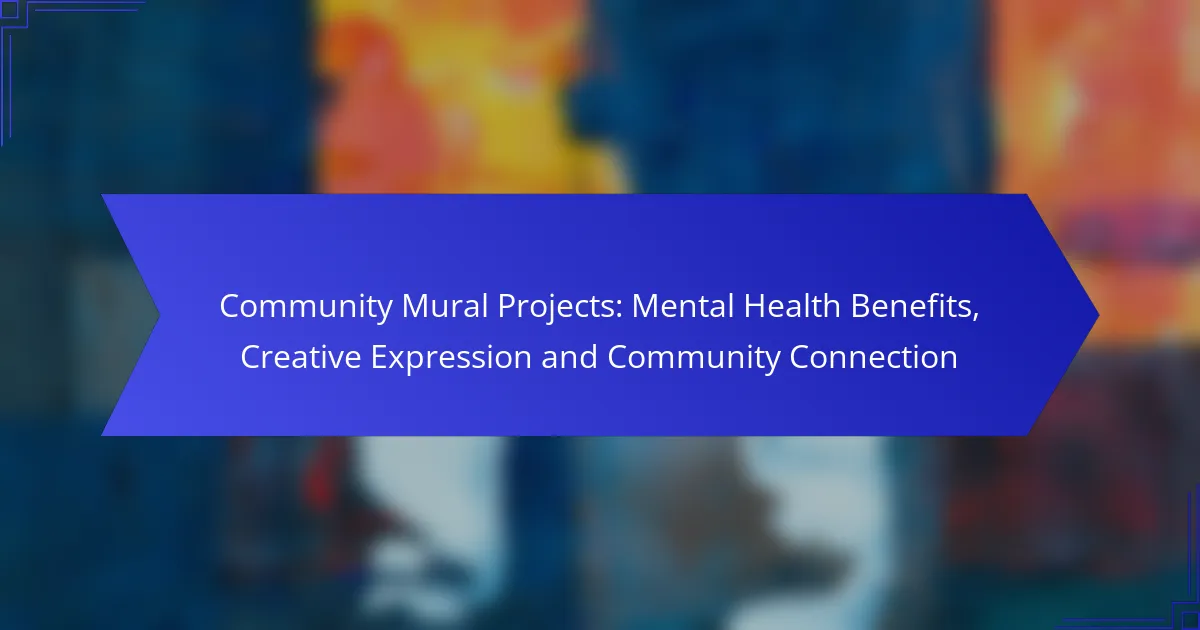Community mural projects play a vital role in fostering environmental awareness, beautifying neighborhoods, and instilling a sense of pride among residents. By transforming public spaces into vibrant artistic expressions, these murals not only highlight local ecological themes but also enhance the visual appeal and identity of the community. As a result, they inspire residents to engage with their environment and take ownership of their surroundings.
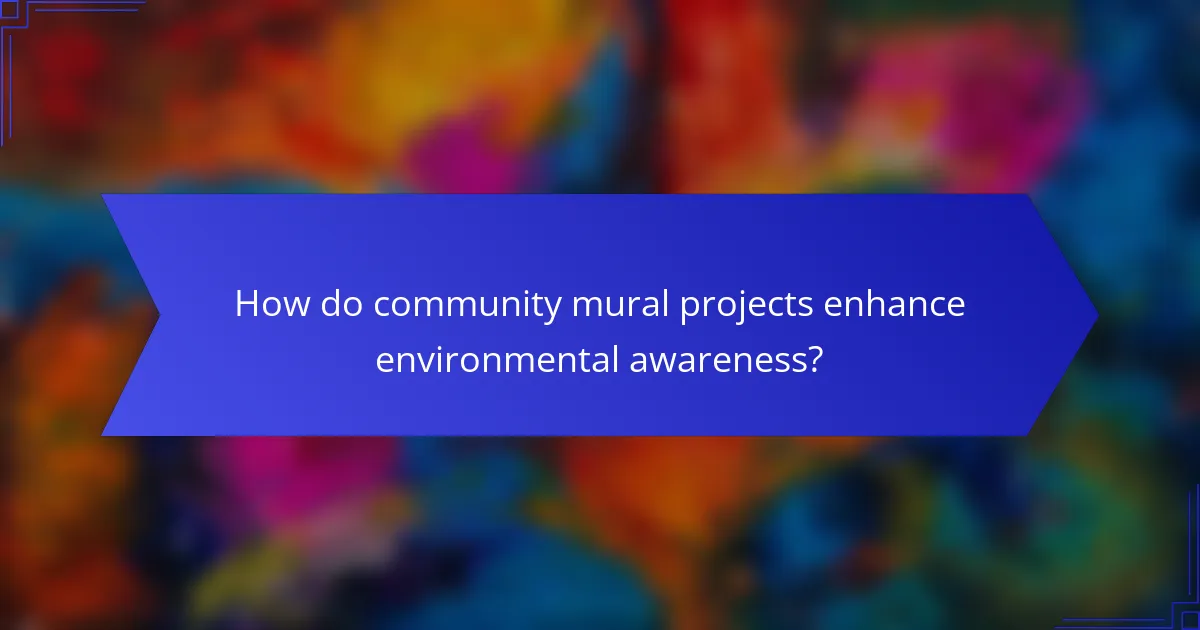
How do community mural projects enhance environmental awareness?
Community mural projects enhance environmental awareness by transforming public spaces into vibrant showcases of ecological themes. These murals serve as visual reminders of local environmental issues, inspiring residents to engage with and protect their surroundings.
Promote sustainability through art
Mural projects can highlight sustainable practices, such as recycling and conservation, by incorporating these themes into their designs. For example, a mural might depict the benefits of using renewable energy sources or showcase local flora and fauna, emphasizing the importance of biodiversity.
Artists can collaborate with environmental organizations to ensure that the messages conveyed are accurate and impactful. This partnership can also help in sourcing eco-friendly materials for the murals, further reinforcing the sustainability message.
Educate residents on local ecology
Murals can serve as educational tools, illustrating local ecosystems and the species that inhabit them. By featuring native plants and animals, these artworks can inform residents about their local environment and the importance of preserving it.
Incorporating QR codes into the mural design can provide viewers with additional information, such as links to local conservation efforts or educational resources. This interactive element can deepen the community’s understanding of ecological issues.
Encourage community engagement with nature
Community mural projects often involve local residents in the creation process, fostering a sense of ownership and pride. This engagement can lead to increased interest in local parks and natural areas, encouraging people to spend more time outdoors.
Organizing mural painting events can also serve as a platform for community discussions about environmental concerns, promoting collective action towards local sustainability initiatives. By bringing people together, these projects can strengthen community bonds while raising awareness about nature.

What are the aesthetic benefits of community murals?
Community murals enhance the visual appeal of neighborhoods, transforming dull spaces into vibrant works of art. They contribute to a sense of place and identity, making areas more inviting and engaging for residents and visitors alike.
Transform urban landscapes
Community murals can dramatically alter the appearance of urban environments. By covering blank walls and neglected spaces with colorful artwork, they create focal points that draw attention and encourage exploration. This transformation can turn a once-overlooked area into a lively destination.
Consider murals that depict local history or culture; these not only beautify but also educate the public about the community’s heritage. Engaging local artists ensures that the artwork resonates with the neighborhood’s identity, fostering a deeper connection among residents.
Increase property values
Investing in community murals can lead to increased property values in the surrounding area. Properties near well-maintained murals often see a rise in demand, as potential buyers are attracted to the enhanced aesthetic and cultural appeal. This can translate to higher sale prices and rental rates.
Research indicates that neighborhoods with vibrant public art can experience property value increases of 10-20%. Homeowners and real estate investors should consider murals as a strategic enhancement to boost their investments.
Attract tourism and visitors
Murals serve as attractions that can draw tourists and visitors to a neighborhood. Unique and visually striking murals can become iconic landmarks, encouraging people to visit specifically to see the artwork. This influx of visitors can benefit local businesses, from cafes to shops.
Communities can promote their murals through social media and tourism campaigns, highlighting them as must-see destinations. Collaborating with local tourism boards can further enhance visibility and attract a broader audience, ultimately supporting the local economy.
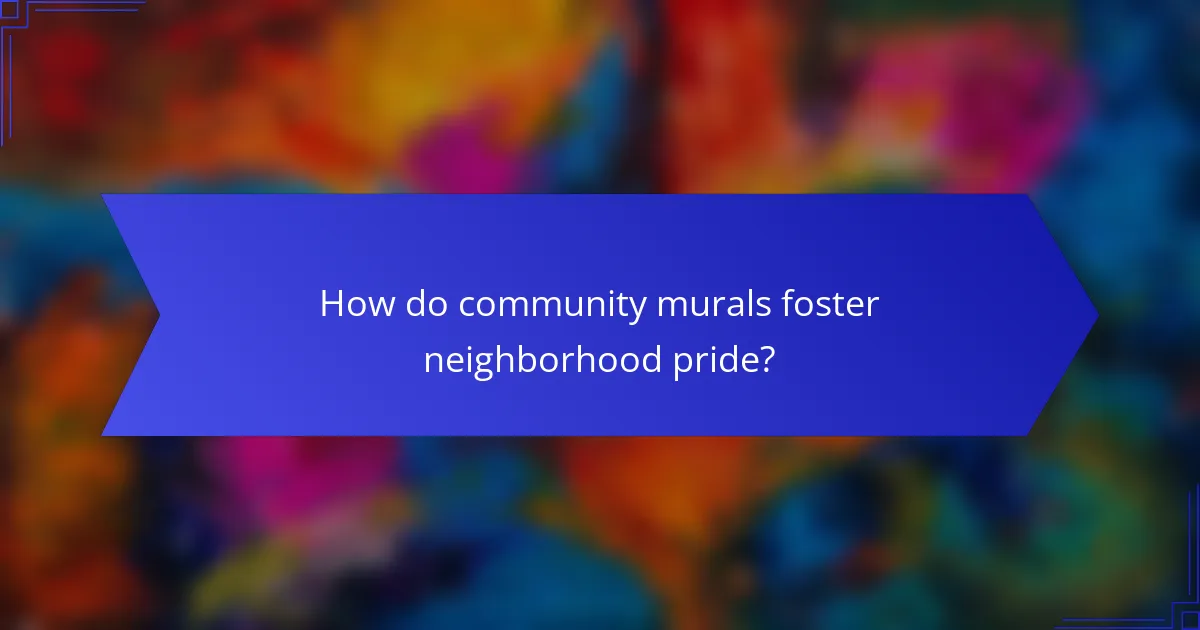
How do community murals foster neighborhood pride?
Community murals enhance neighborhood pride by transforming public spaces into vibrant expressions of local culture and identity. They create a sense of ownership among residents, encouraging them to take pride in their surroundings and engage with their community.
Strengthen local identity
Murals serve as visual representations of a community’s unique character, helping to establish a strong local identity. By incorporating local symbols, history, and themes, these artworks resonate with residents and foster a connection to their environment.
For example, a mural depicting historical events or notable figures from the area can remind residents of their shared heritage, reinforcing their sense of belonging. This can be particularly impactful in diverse neighborhoods, where a mural can celebrate various cultural influences.
Encourage collaboration among residents
Creating a mural often involves collaboration among local artists, residents, and organizations, fostering teamwork and community spirit. This process encourages individuals to come together, share ideas, and contribute their skills, which can strengthen relationships within the neighborhood.
Organizing mural projects can also serve as a platform for community meetings and discussions, allowing residents to voice their opinions and preferences. This inclusive approach not only enhances the final artwork but also builds a stronger, more connected community.
Highlight cultural heritage
Murals can be powerful tools for highlighting and preserving a community’s cultural heritage. By featuring traditional art styles, local stories, or significant cultural symbols, murals celebrate the diversity and history of the neighborhood.
For instance, a mural that showcases indigenous art or local folklore can educate both residents and visitors about the area’s rich cultural tapestry. This not only promotes pride among community members but also attracts tourism and interest in the local culture.

What are the steps to initiate a community mural project?
To initiate a community mural project, start by engaging local residents and stakeholders to gather their ideas and preferences. This collaborative approach ensures the mural reflects the community’s identity and values.
Gather community input
Gathering community input is crucial for the success of a mural project. Organize meetings, workshops, or surveys to collect feedback on themes, designs, and locations that resonate with residents. This involvement fosters a sense of ownership and pride in the project.
Consider using online platforms or social media to reach a broader audience, especially if in-person gatherings are limited. Document the input and prioritize the most popular ideas to guide the mural’s development.
Select a mural artist
Choosing the right mural artist is essential for translating community ideas into a visual masterpiece. Look for artists with experience in public art and a portfolio that aligns with the community’s vision. Local artists may have a deeper understanding of the area’s culture and history.
Conduct interviews or host a selection panel that includes community members to ensure transparency and inclusivity in the decision-making process. This can also help build relationships between the artist and the community.
Secure funding and permits
Funding and permits are critical components of any mural project. Explore various funding sources, including local government grants, community fundraising, or sponsorships from local businesses. Aim for a budget that covers materials, artist fees, and maintenance costs.
Before starting the mural, check with local authorities about necessary permits and regulations. This may include zoning laws or public art guidelines. Securing these permits early can prevent delays and ensure compliance with local standards.

What criteria should be considered when selecting mural themes?
Selecting mural themes involves considering factors that resonate with the community, reflect local issues, and engage diverse voices. Prioritizing these criteria ensures that the mural not only beautifies the area but also fosters a sense of pride and awareness among residents.
Relevance to local issues
The mural theme should directly address pressing local issues, such as environmental concerns, social justice, or cultural heritage. For instance, a mural highlighting pollution in a nearby river can raise awareness about water quality and inspire community action.
Engaging with local organizations or conducting surveys can help identify these issues. This approach ensures that the mural serves as a relevant conversation starter and encourages community involvement.
Inclusivity of community voices
Incorporating diverse community perspectives is essential when selecting mural themes. This can be achieved by hosting workshops or focus groups where residents can share their ideas and experiences. Ensuring representation from various demographics fosters a sense of ownership and pride in the final artwork.
Consider reaching out to local artists, schools, and cultural organizations to gather input. This collaborative process not only enriches the theme but also strengthens community bonds.
Visual impact and creativity
The visual impact of a mural is crucial for attracting attention and conveying its message effectively. A creative design that utilizes vibrant colors and engaging imagery can draw in passersby and spark curiosity about the theme.
When brainstorming ideas, consider how the mural will fit within its surroundings and the scale of the wall. A well-executed mural can transform a dull space into a focal point, enhancing the overall aesthetic of the neighborhood.







